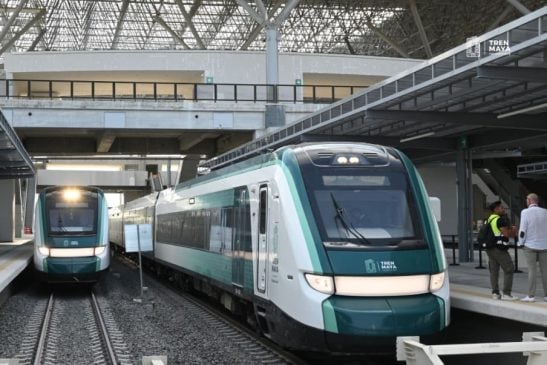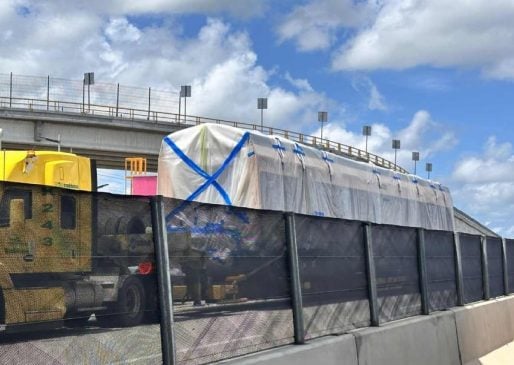Riviera Maya, Q.R. — Communities surrounding the Maya Train route have not been left behind said López Obrador. Communities surrounding the construction of the Maya Train benefit from the Well-being Programs, projects and additional initiatives that contribute to integral development.
“There cannot be such an important, great project, one of the best in the world, with poverty on the sides where the train will pass, so we are serving all the communities,” President Andrés Manuel López Obrador said Thursday morning during a press conference.
With him at the conference, Javier May, the General Director of the National Fund for the Promotion of Tourism (Fonatur) announced that 127 towns in 34 municipalities in Campeche, Chiapas, Quintana Roo, Tabasco and Yucatán are served through 432 projects and actions to promote productivity.
As of November 2022, work is being carried out to improve roads, public spaces and harvest roads from sections 1 to 4. In addition, the hydraulic, educational, communal, cultural and health infrastructure, as well as the electrical network, are being optimized.
Regarding the internet facilities, the needs of the population in sections 1 to 6 are met. As a result, 48 requests have been attended to in order to offer service in schools, Ejidal police stations, among others, with 35 more petitions in process.
As of November 2022, over 3,800 homes have been improved while 352 families were built new houses who were relocated due to the right of way.
“This is a very important action by the Government of Mexico that demonstrates that the Maya Train is not an imposed work, nor dispossession. No one is dispossessed, quite the contrary, it has been carried out with dialogue, with agreements, without abandoning anyone,” he stressed.
Diego Prieto Hernández, who heads the National Institute of Anthropology and History (INAH), reported that section 7 of the Maya Train already has a definitive outline that will protect all vestiges.
“We will be accompanying the works in charge of the Secretary of National Defense with the task of recovery and conservation of archaeological material,” he said.
He announced that an international meeting of Mayan studies will be held. “You have to understand that the recovery of this material is not to store it in warehouses or have it in laboratories, you have to do the work of analysis, weighting and interpretation of these materials,” he explained.
President López Obrador highlighted the historic preservation of archaeological pieces and zones carried out by the Government of Mexico through the INAH.
“Archaeological zones are being rescued, that is an intervention that has not been done in a long time,” he said.
As of January 11, the registration and preservation includes 37,311 real estate among which are foundations, albarradas and leveling; 1,682 movable assets that include metates and ceramics in addition to 463 bones, 742,891 ceramic fragments analyzed from sections 1 to 5; 669 vessels in the process of analysis and 1,145 natural features associated with the archaeological context such as caves, wells and cenotes.
The research, conservation, care and improvement activities of the units and infrastructure continue in the 26 sites incorporated into the Program for the Improvement of Archaeological Zones (Promeza) in order to receive the public soon through the Visitor Service Centers (Catvis) .
“Never has such an important archaeological heritage research, conservation, and dissemination work been carried out in the Mexican Mayan area,” said the head of the INAH.


